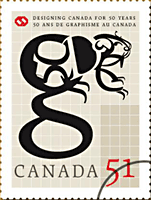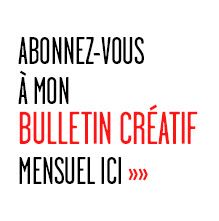dans la dernière édition en ligne du magazine «
step inside design», j'ai trouvé un article sur ce qui fait une «star» en design. un sujet rarement abordé, et pourtant, nous avons, nous aussi, nos «stars graphiques».
on explique le phénomène en faisant référence au passé. le style des «vedettes» a changé comme notre métier a changé.
dans les années 60, on distinguait un designer pour son genre de travail. exemple : herb lubalin pour sa grande maîtrise du design typographique. depuis quelques années, on identifie un designer pour son style, comme jennifer sterling pour sa typographie expressionniste, et ce, peu importe le projet, le sujet, le médium.
l'article raconte aussi que si notre travail graphique est bien fait, il passera probablement inaperçu, sauf aux yeux des gens qui oeuvrent dans le domaine. alors pour qu'un designer sorte de l'anonymat, il ou elle doit sortir du moule, faire des éclats, faire parler de sa personne quelque part. bref, ça ne vient pas tout seul.
je vous propose quelques extraits ci-dessous.

«the thing became more specific, so rather than design, it was identity design (Paul Rand), or movie-title design (Saul Bass), or advertising design (Helmut Krone), or letterbased design (Herb Lubalin), or illustration-based design (Milton Glaser).»
«Recent stars symbolize things like borrowed historicism (Paula Scher), creative anarchy (David Carson), expressionist typography ( Jennifer Sterling), high concept (Stefan Sagmeister), extra-dimensional space (April Greiman), or design for social change (Bruce Mau). Today the field is so thick with stars that you have to be a supernova just to get noticed.»
«Graphic design—if it’s good—is usually invisible, even to other designers. This is because most of the work we do plays a supporting role, not a lead role, and it’s inextricably linked with a goal that’s somewhat hidden from the audience. For a design solution to get noticed in its own right it usually has to “act out.” Like a child who wants attention, it has to “be bad” in some way. I personally love design with some attitude, but I’m a designer. Audiences don’t view it the same way. They want design to be invisible—they care much more about the “what” than the “how” of communication.»
«the stars will have a role to play. We’ll still need them to inspire the students, break stylistic barriers, challenge the status quo, provide images for design magazines, and so on. We’ll probably end up with more stars, because we’ll have more categories of design and behavior to symbolize. There will be plenty of opportunities for those who choose to pursue stardom, but the pay will be less, the audiences smaller, and the celebrity more fleeting.»
![gycouture[design]](https://blogger.googleusercontent.com/img/a/AVvXsEjCBQ03iF2lWEZ2umCYU2qhOMX3RIF3OF4v1CGwC_Xf_4TpMpOP_Cw5eE0Ss4-lF0NeTLVBOA5ErKNmsedtMMOYvrb6qry2U3atcDaWgYP1FY40zcMQnNILlHDhyZvh55Tgx0JHImgPjQyDV1DTcKCNN2mHCDezR1Vkk5FfvRljyCWnhkKgNg=s1000)







































